KPNB1 mediates PER/CRY nuclear translocation and circadian clock function
- PMID: 26319354
- PMCID: PMC4597257
- DOI: 10.7554/eLife.08647
KPNB1 mediates PER/CRY nuclear translocation and circadian clock function
Abstract
Regulated nuclear translocation of the PER/CRY repressor complex is critical for negative feedback regulation of the circadian clock of mammals. However, the precise molecular mechanism is not fully understood. Here, we report that KPNB1, an importin β component of the ncRNA repressor of nuclear factor of activated T cells (NRON) ribonucleoprotein complex, mediates nuclear translocation and repressor function of the PER/CRY complex. RNAi depletion of KPNB1 traps the PER/CRY complex in the cytoplasm by blocking nuclear entry of PER proteins in human cells. KPNB1 interacts mainly with PER proteins and directs PER/CRY nuclear transport in a circadian fashion. Interestingly, KPNB1 regulates the PER/CRY nuclear entry and repressor function, independently of importin α, its classical partner. Moreover, inducible inhibition of the conserved Drosophila importin β in lateral neurons abolishes behavioral rhythms in flies. Collectively, these data show that KPNB1 is required for timely nuclear import of PER/CRY in the negative feedback regulation of the circadian clock.
Keywords: CRY; D. melanogaster; KPNB1; PER; cell biology; circadian clock; evolutionary biology; genomics; human; mouse; nuclear entry.
Conflict of interest statement
The authors declare that no competing interests exist.
Figures
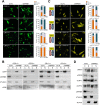
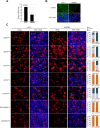
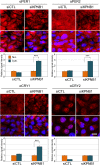



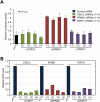


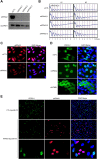

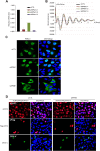

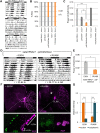

Similar articles
-
The NRON complex controls circadian clock function through regulated PER and CRY nuclear translocation.Sci Rep. 2019 Aug 15;9(1):11883. doi: 10.1038/s41598-019-48341-8. Sci Rep. 2019. PMID: 31417156 Free PMC article.
-
KPNB1, XPO7 and IPO8 mediate the translocation ofNF-κB/p65 into the nucleus.Traffic. 2013 Nov;14(11):1132-43. doi: 10.1111/tra.12097. Epub 2013 Aug 19. Traffic. 2013. PMID: 23906023
-
Importin alpha/beta mediates nuclear transport of a mammalian circadian clock component, mCRY2, together with mPER2, through a bipartite nuclear localization signal.J Biol Chem. 2005 Apr 8;280(14):13272-8. doi: 10.1074/jbc.M413236200. Epub 2005 Feb 2. J Biol Chem. 2005. PMID: 15689618
-
KPNB1-mediated nuclear import in cancer.Eur J Pharmacol. 2023 Sep 15;955:175925. doi: 10.1016/j.ejphar.2023.175925. Epub 2023 Jul 18. Eur J Pharmacol. 2023. PMID: 37473981 Review.
-
Importin alpha: a multipurpose nuclear-transport receptor.Trends Cell Biol. 2004 Sep;14(9):505-14. doi: 10.1016/j.tcb.2004.07.016. Trends Cell Biol. 2004. PMID: 15350979 Review.
Cited by
-
Periodicity, repression, and the molecular architecture of the mammalian circadian clock.Eur J Neurosci. 2020 Jan;51(1):139-165. doi: 10.1111/ejn.14254. Epub 2018 Dec 8. Eur J Neurosci. 2020. PMID: 30402960 Free PMC article. Review.
-
Suppression of Kpnβ1 expression inhibits human breast cancer cell proliferation by abrogating nuclear transport of Her2.Oncol Rep. 2018 Feb;39(2):554-564. doi: 10.3892/or.2017.6151. Epub 2017 Dec 12. Oncol Rep. 2018. PMID: 29251332 Free PMC article.
-
Molecular modulators of the circadian clock: lessons from flies and mice.Cell Mol Life Sci. 2017 Mar;74(6):1035-1059. doi: 10.1007/s00018-016-2378-8. Epub 2016 Sep 29. Cell Mol Life Sci. 2017. PMID: 27689221 Free PMC article. Review.
-
The NRON complex controls circadian clock function through regulated PER and CRY nuclear translocation.Sci Rep. 2019 Aug 15;9(1):11883. doi: 10.1038/s41598-019-48341-8. Sci Rep. 2019. PMID: 31417156 Free PMC article.
-
Insights about circadian clock in glioma: From molecular pathways to therapeutic drugs.CNS Neurosci Ther. 2022 Dec;28(12):1930-1941. doi: 10.1111/cns.13966. Epub 2022 Sep 6. CNS Neurosci Ther. 2022. PMID: 36066207 Free PMC article. Review.
References
-
- Bond SR, Naus CC. RF-Cloning.org: an online tool for the design of restriction-free cloning projects. Nucleic Acids Research. 2012;40:W209–W213. doi: 10.1093/nar/gks396. - DOI - PMC - PubMed
-
- Brand AH, Perrimon N. Targeted gene expression as a means of altering cell fates and generating dominant phenotypes. Development. 1993;118:401–415. - PubMed
Publication types
MeSH terms
Substances
Grants and funding
LinkOut - more resources
Full Text Sources
Molecular Biology Databases

